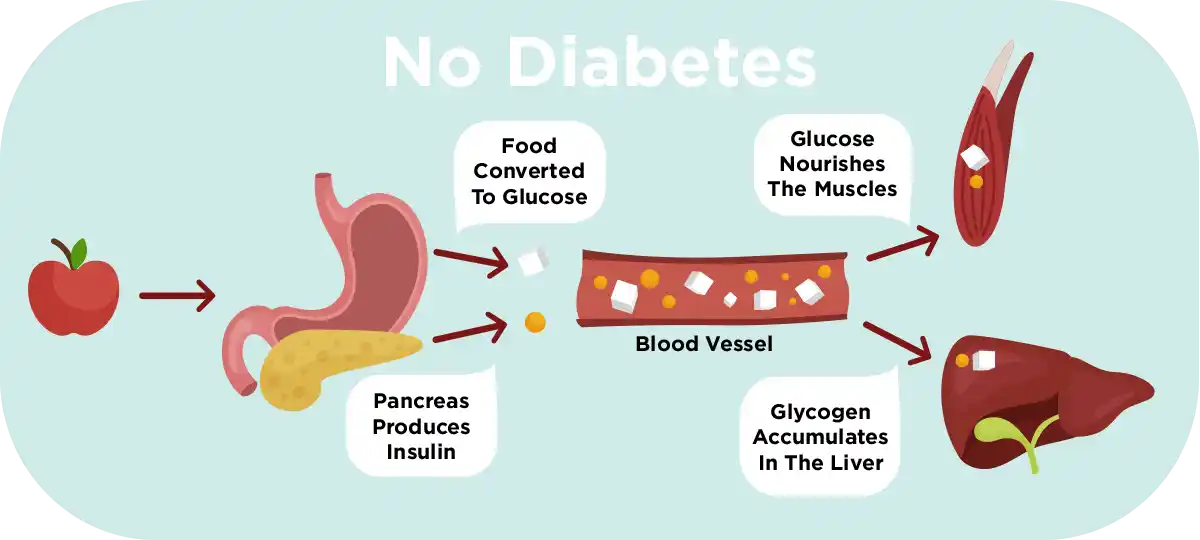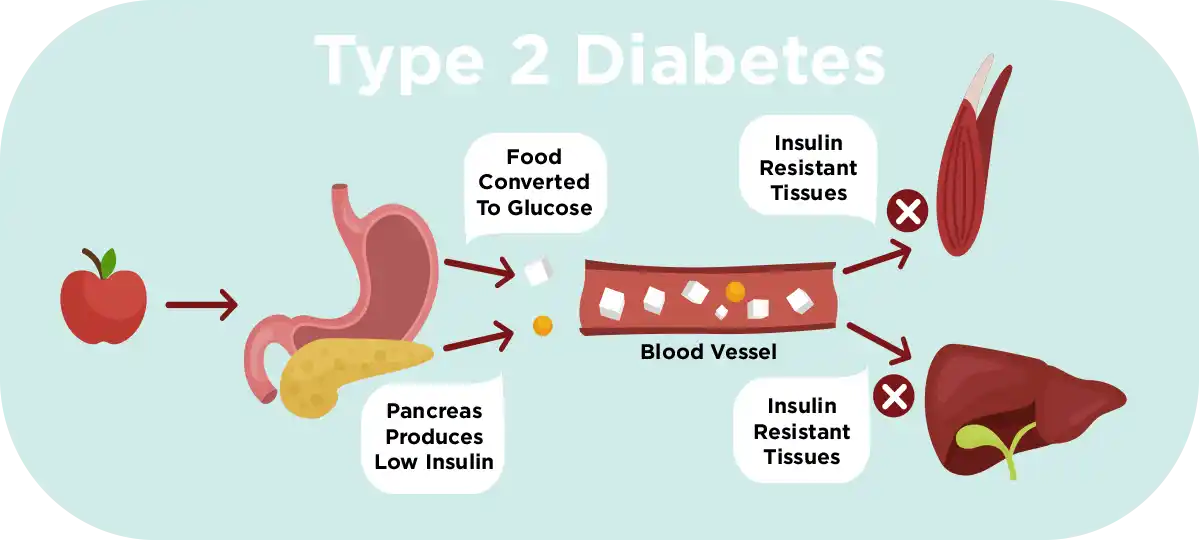SIGNS, SYMPTOMS & TREATMENTS FOR TYPE 2 DIABETES
What is type 2 diabetes?
Diabetes Mellitus affects the way that blood sugar (glucose) is processed and handled in your body. Type 2 diabetes mellitus (otherwise known as DM2 or diabetes type 2) is the most common type of diabetes affecting about 1 in 10 people in the United States. All ages can develop type 2 diabetes, but it is most common in adults over 45 years old.
Insulin is a hormone that helps sugar get into your cells. In type 2 diabetes, your body does not react to insulin as it should, and over years, your body may not make enough insulin. Because of that, sugar cannot get into cells, and the sugar increases in your blood.
This buildup of sugar in your blood can have several negative effects:
- Lower energy levels
- Interrupted sleep (waking up in the night to use the bathroom is common with high blood sugars)
- Over time, damage to the eyes, kidneys, and nerves

A closer look at type 2 diabetes


PATIENT-FOCUSED TYPE 2 DIABETES TREATMENT
How can people with type 2 diabetes stay healthy?
The good news is type 2 diabetes is treatable. With type 2 diabetes, the goal is to keep the blood sugar levels from going too high or too low. Most people with diabetes find keeping their blood sugar steady helps them have more energy, feel better, and sleep better. Some patients with diabetes have lived with high blood sugars so long, they don’t even realize how much better they can feel every day!
The first step in managing diabetes is understanding what your blood sugar level is. Most people use finger pricks to check their blood sugar, but continuous glucose monitors are a more comprehensive way to measure blood sugar with less work. With knowledge of blood sugars, some people can manage their diabetes with healthy eating and exercise alone. Others use oral medication (pills) or non-insulin shots in addition. Some people also need to inject insulin to manage their diabetes.
